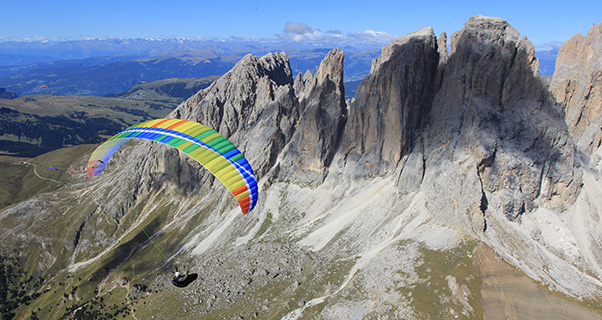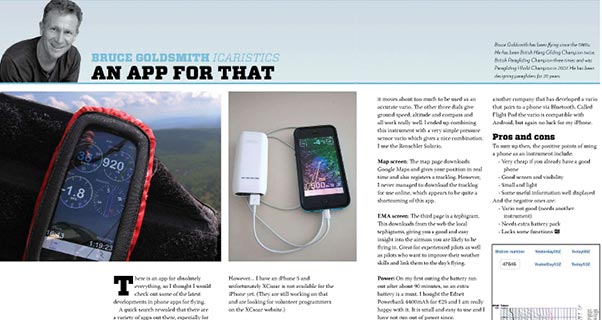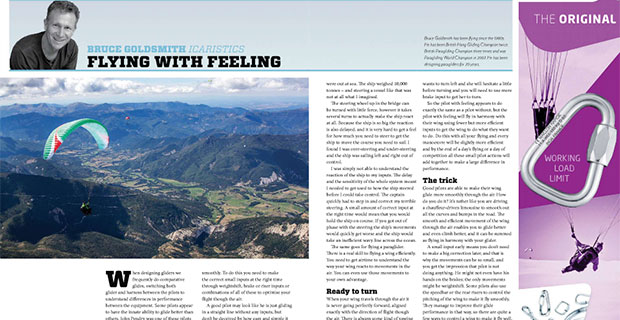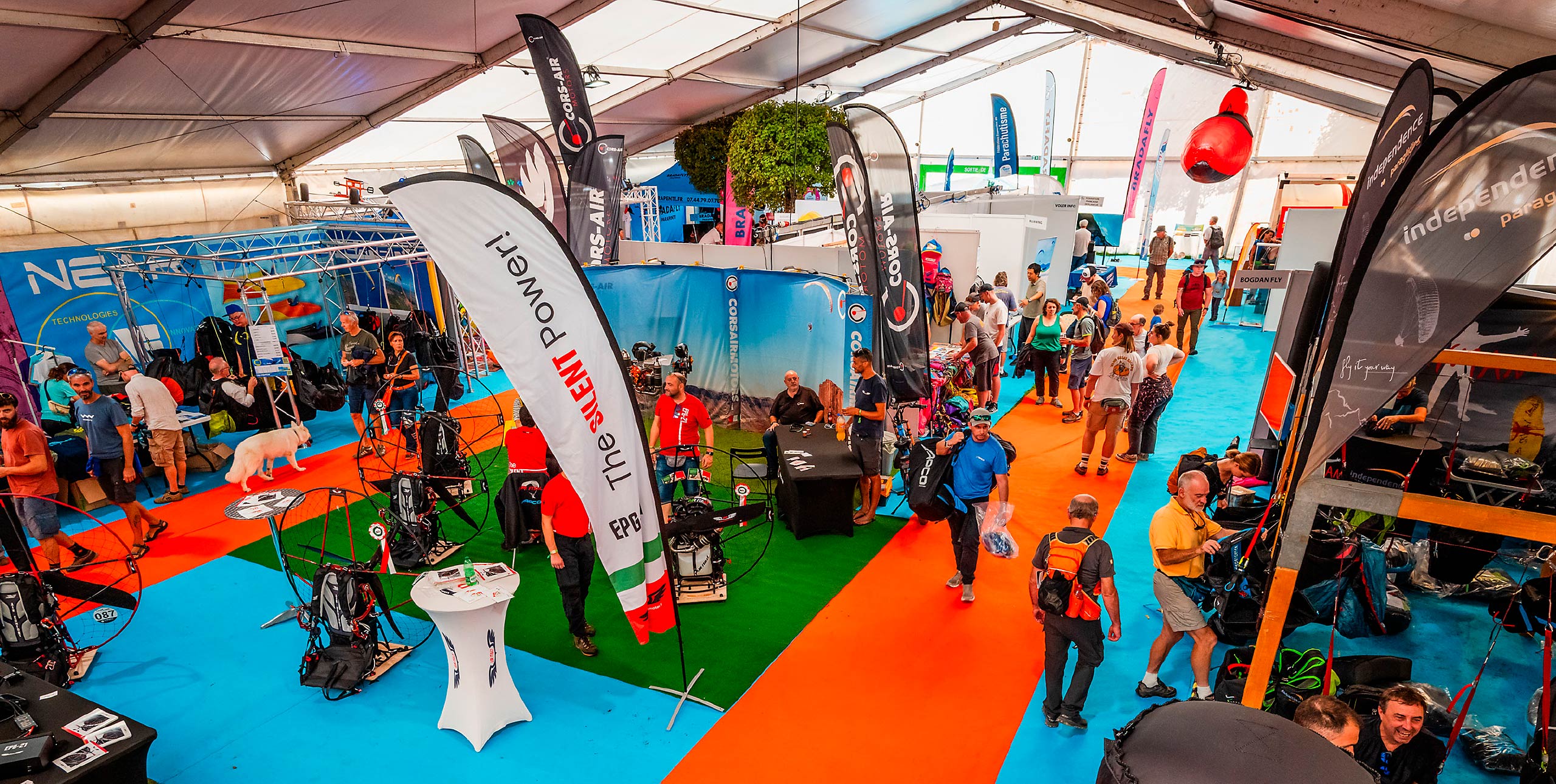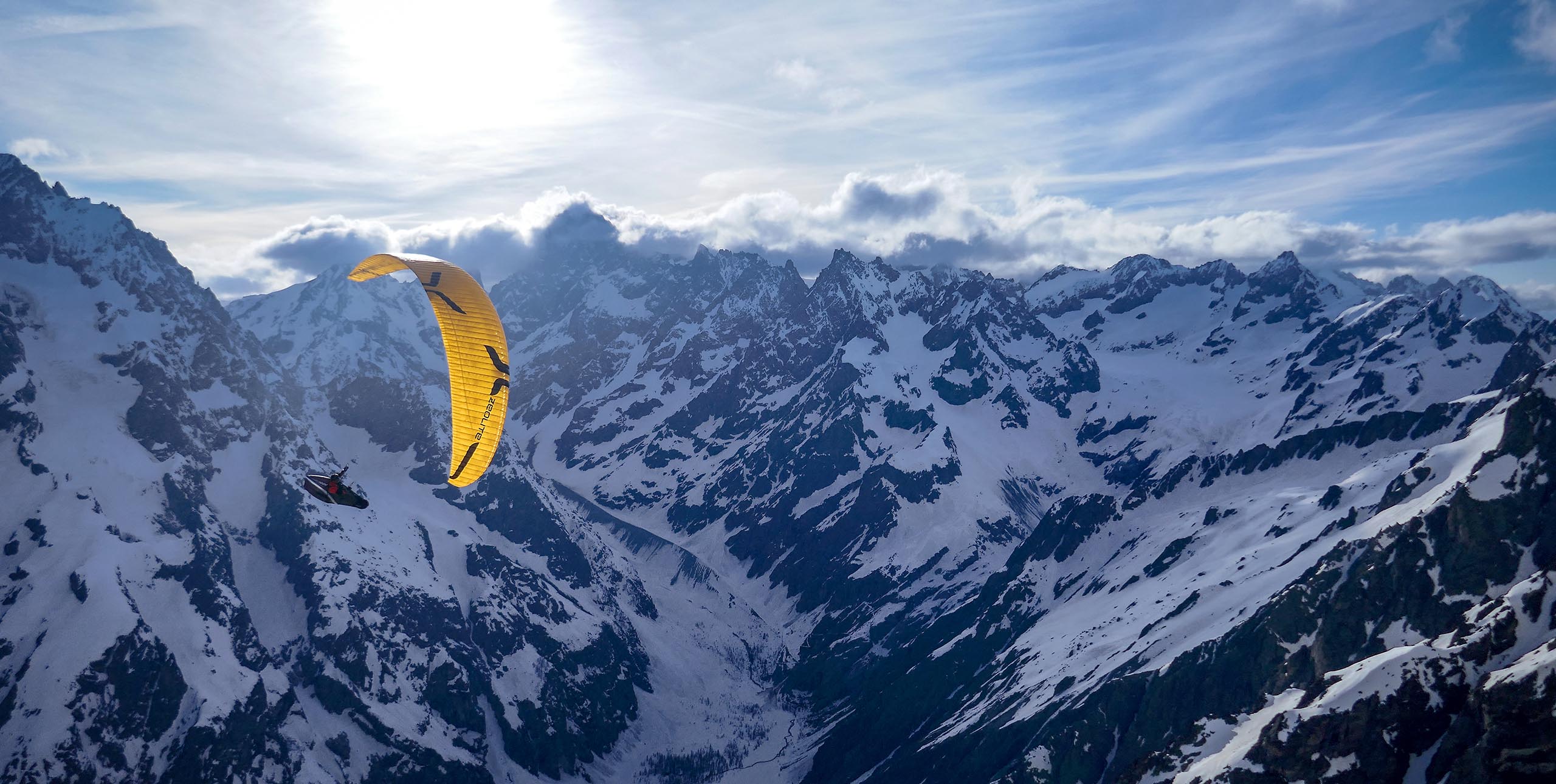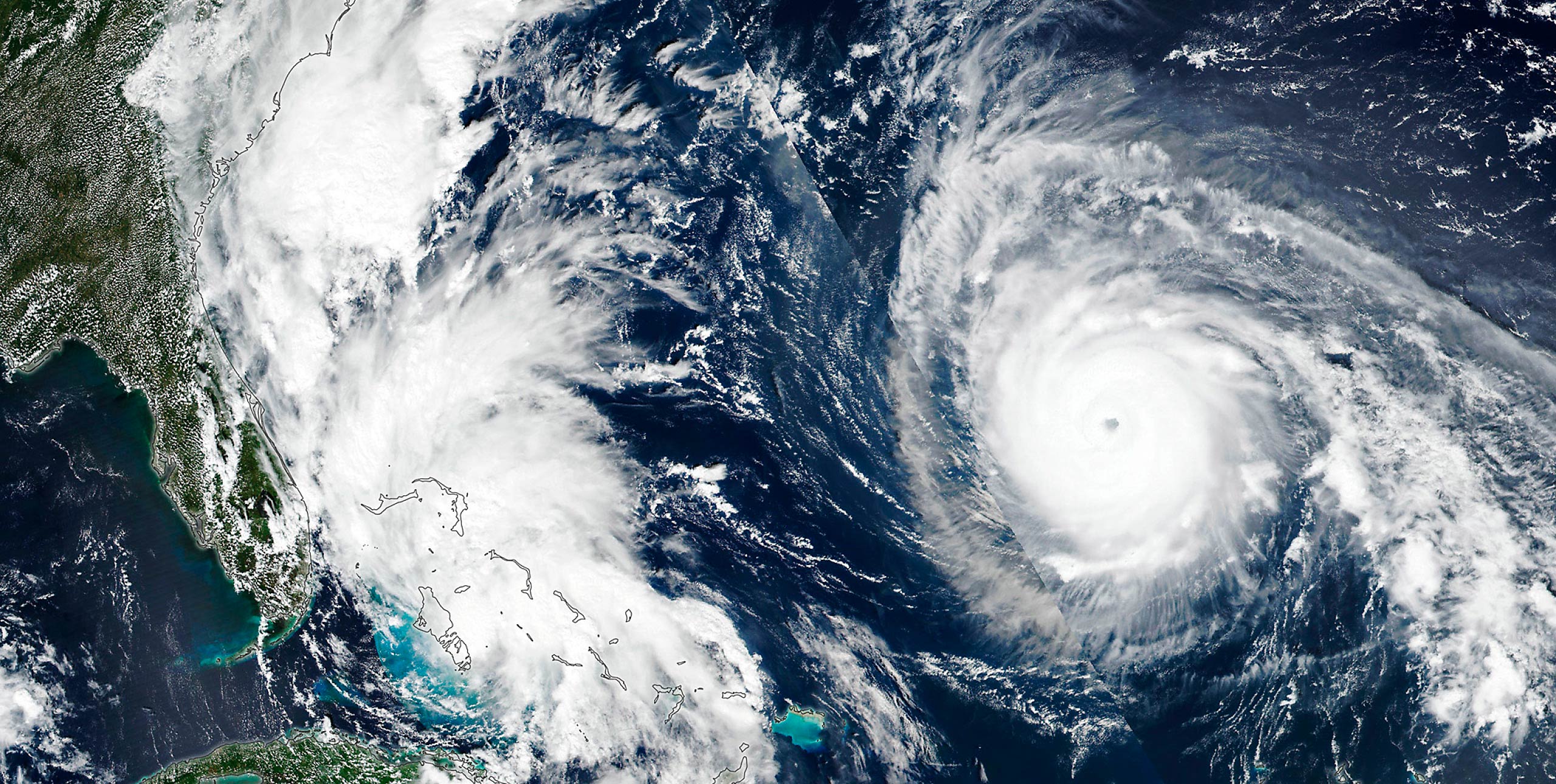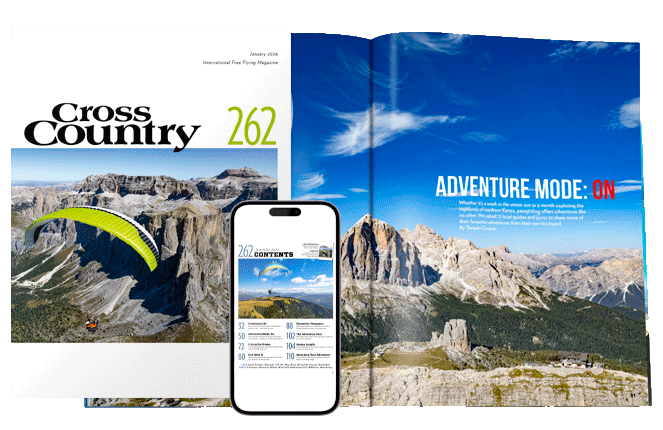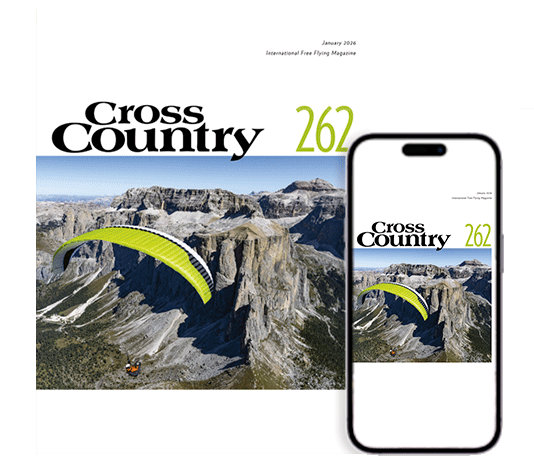Twists have become the number one danger for paragliding competition pilots. Bruce Goldsmith explains why. Published in Cross Country magazine in 2002
In July, I, like so many others, lost a good friend. Henrik Jensen’s accident at the European Championships was a tragedy, but it should teach us some important lessons.
Henrik died after his risers and lines got twisted following a collapse. The glider had already recovered normal flight but because he was twisted and his brakes were blocked by the twist, his glider entered a gentle 360 degree turn.
The turn progressively picked up speed and Henrik hit the hill in a steep spiral five full turns later. He had tried to throw his reserve but it was found still in its container next to him on the ground.
It was not the first time this had happened to Henrik. At the 2000 European Championships in Garmisch, Germany, Henrik had suffered the same ordeal above take-off but had slowly untwisted himself in front of all the pilots waiting to launch, who applauded when he swung free and flew off to continue the task. It is quite likely that Henrik was trying to do the same thing in Slovenia when he was killed.
Henrik is not the only person who has suffered from twisted risers. In the last couple of years, flying supine in laid-back harnesses, often with enclosed leg pods, has become the norm amongst competitors eager to capitalise on the aerodynamic advantages they offer.
During the World Championships last year, several pilots got twisted including the USA’s Josh Cohn and Korean designer Gin Seok Song, who was saved by his reserve. I mentioned these incidents in Killer Days, Icaristics, August 2001, but since then the problem has not improved at all.
Only an hour before Henrik’s accident, I saw competition leader Alex Hofer (CH) throw his reserve after getting twisted. His glider recovered normal flight before his reserve deployed, so he carefully pulled up the reserves lines and placed the unopened package on his lap.
He continued the rest of the task with his reserve balanced next to his instruments, and flew on to win the competition and become European Champion!
During the European Championships there were in total three reserve deployments; we have already discussed the first two, and surprise surprise, the third deployment was also prompted by twisted lines.
Turkey’s Semih Sayer crossed the finish line and did some wingovers above the goal field to lose height and celebrate his success. He is an experienced acro pilot but he got a collapse during the wingovers and became twisted. Semih threw his reserve instantly and despite his low altitude, Semih came down safely in the landing field.
So, bucking the trend of other recent FAI events, this year’s Europeans saw just three reserves thrown – but all three were caused by pilots getting twisted.
WHAT’S CAUSING THE PROBLEM?
The problem primarily arises from flying supine, though some other factors are involved. A supine pilot has much higher rotational inertia than a pilot flying in a standard seated harness.
Rotational inertia is easily demonstrated by sitting on a bar stool with a swivel seat. Sit on the bar stool and lay out as flat as you can and get someone to spin you around slowly.
Then pull your knees in so that you are sitting on the stool with your hands around your knees. You will instantly feel yourself start to spin very quickly, and its quite surprising how much speed you pick up.
This is because your rotational inertia is much greater with your legs stretched out. The rotational momentum of any body is calculated by multiplying the bodys mass by the square of the distance from the point of rotation.
So, when lying outstretched, a persons rotational inertia is up to three times as it would be in a balled-up position.
When your glider changes its direction of rotation (most violently when it turns and dives towards the collapsed side), the pilot also needs to follow it and change direction in the same way.
If you have more rotational inertia then more force needs to be applied to get the pilot to rotate. This rotation is achieved by the forces applied though the physical connection between the pilot and the glider. So the further apart the hang points are, the better the pilot will follow the wing.
HOW DO WE LIMIT THE RISK OF GETTING TWISTS?
There are several ways in which this problem can be solved:
1 Dont fly supine. Some harnesses are more supine than others. Flying with your legs straight out and your back laid out flat will dramatically increase your chances of getting twists.
2 Lengthen your chest strap and increase the distance between your karabiners. This may take your glider out of any certification criteria however.
3 Increase the angle between the lines and the pilot. A design issue – and not one we can influence as everyday pilots
4 Fly a wing that does not change rotational direction so quickly during normal flying as well as during collapses, spins or stalls. Competition wings are the worst offenders, but dont be misled into thinking that aspect ratio is the critical factor here. In fact a low aspect ratio wing with long lines would actually be the worst, because of point 3 above.
5 Be short, and fly with light boots and a light helmet! I am sure that it is no coincidence that both Alex Hofer and Henrik Jensens bodies are tall and thin.
THE FUTURE
Getting twisted is a risk one takes when flying supine. You can reduce this risk by flying with your hang points further apart, or not flying a competition glider, but these are both secondary factors compared to the cause of the problem, which is flying supine.
Banning supine flying or competition gliders is one way out but it is hardly progress. It must be possible to fly supine safely. I sincerely hope that a suitable technical solution can be found to solve this serious safety problem before any more pilots are hurt after getting twists.
Updated January 2011
• Got news? Send it to us at news@xccontent.local
Subscribe to the world’s favourite hang gliding and paragliding magazine


